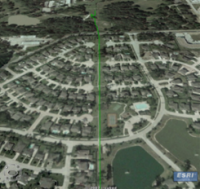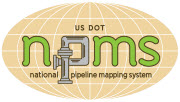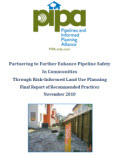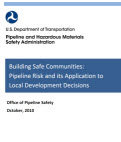Design for Protection From Pipeline Hazards
Transmission pipeline failures present risks that may impact people, property, the environment, and economies beyond the edge of pipeline rights-of-way.
 |
|

|
PIPA Tools for Property Owners and Developers
Recommended Practices for Property Developer/Owner
BL07 Understand the Elements of a Transmission Pipeline Easement
Property developers/owners should have an understanding of the elements of and rights conveyed in a transmission pipeline easement.
BL08 Manage Land Records
Land use agreements between pipeline operators and property owners should be documented and managed and, when necessary, recorded.
BL09 Document and Record Easement Amendments
Easement amendments should be documented, managed and recorded.
BL14 Participate to Improve State Excavation Damage Prevention Programs
All pipeline safety stakeholders should participate in the work of organizations seeking to make improvements to state excavation damage prevention programs, especially efforts to reduce exemptions from participation in one-call systems.
ND02 Gather Information for Design of Property Development near Transmission Pipelines
In designing a proposed property development the property developer/owner should use all reasonable means to obtain information about transmission pipeline facilities in the area of the proposed development.
ND03 Review Acceptability of Proposed Land Use of Transmission Pipeline Right-of-Way Prior to Design
The property developer/owner should review preliminary information about acceptable land uses on a transmission pipeline right-of-way prior to the design of a property development.
ND04 Coordinate Property Development Design and Construction with Transmission Pipeline Operator
When property development is planned within the consultation zone (reference PIPA Recommended Practice BL05), the property developer/owner and the transmission pipeline operator should communicate to ensure possible impacts of pipeline incidents and maintenance needs are considered during development design and construction.
ND06 Require Consideration of Transmission Pipeline Facilities in Land Development Design
Whenever development is proposed on property containing transmission pipeline facilities, local governments should require that the submitted land development plans address in detail the steps necessary to safely integrate the transmission pipeline into the design of the project.
ND07 Define Blanket Easement Agreements When Necessary
Upon request by the landowner, a transmission pipeline easement agreement may be defined to an acceptable, reasonable, and safe width and explicit location. State statutes or local government regulations may require easements to be defined prior to the approval of rezoning, subdivision plats and development permits.
ND08 Collaborate on Alternate Use and Development of Transmission Pipeline Right-of-Way
Property developers/owners, local governments and transmission pipeline operators may collaborate on alternative use of the transmission pipeline right-of-way and related maintenance.
ND10 Record Transmission Pipeline Easements on Development Plans and Final Plats
Local governments should require all recorded development plans and final plats to clearly show the location of transmission pipeline easements and identify the pipeline operators.
ND11 Reduce Transmission Pipeline Risk through Design and Location of New Parking Lots and Parking Structures
Parking lots and parking structures should be preferentially located and designed to reduce the consequences that could result from a transmission pipeline incident and to reduce potential interference with transmission pipeline maintenance and inspections.
ND12 Reduce Transmission Pipeline Risk through Design and Location of New Roads
Roads and associated appurtenances should be preferentially located and designed to reduce the consequences that could result from a transmission pipeline incident and reduce the potential of interference with pipeline operations and maintenance.
ND13 Reduce Transmission Pipeline Risk through Design and Location of New Utilities and Related Infrastructure
Utilities (both above and below ground) and related infrastructure should be preferentially located and designed to reduce the consequences that could result from a transmission pipeline incident and to reduce the potential of interference with transmission pipeline maintenance and inspections.
ND14 Reduce Transmission Pipeline Risk through Design and Location of Aboveground Water Management Infrastructure
Storm water and irrigation water management facilities, retention ponds, and other above-ground water management infrastructure should be preferentially located and designed to reduce the consequences that could result from a transmission pipeline incident and to reduce the potential of interference with transmission pipeline operations and maintenance.
ND15 Plan and Locate Vegetation to Prevent Interference with Transmission Pipeline Activities
Trees and other vegetation should be planned and located to reduce the potential of interference with transmission pipeline operations, maintenance, and inspections.
ND16 Locate and Design Water Supply and Sanitary Systems to Prevent Contamination and Excavation Damage
Individual water supplies (water wells), small public/private water systems and sanitary disposal systems (septic tanks, leach or drain fields) should be designed and located to prevent excavation damage to transmission pipelines, interference with transmission pipeline maintenance and inspections, and environmental contamination in the event of a transmission pipeline incident.
ND17 Reduce Transmission Pipeline Risk in New Development for Residential, Mixed-Use, and Commercial Land Use
New development within a transmission pipeline planning area (see PIPA Recommended Practice BL06) should be designed and buildings located to reduce the consequences that could result from a transmission pipeline incident and to provide adequate access to the pipeline for operations and maintenance.
ND18 Consider Transmission Pipeline Operation Noise and Odor in Design and Location of Residential, Mixed-Use, and Commercial Land Use Development
Consider noise, odor and other issues when planning and locating developments near above-ground transmission pipeline facilities, such as compressor stations, pumping stations, odorant equipment, regulator stations and other pipeline appurtenances.
ND19 Reduce Transmission Pipeline Risk through Design and Location of New Industrial Land Use Development
New industrial land use development within a transmission pipeline planning area (see PIPA Recommended Practice BL06) should be designed and buildings located to reduce the consequences that could result from a transmission pipeline incident and reduce the potential of interference with transmission pipeline operations and maintenance.
ND20 Reduce Transmission Pipeline Risk through Location, Design, and Construction of New Institutional Land Use Developments
New development of institutional facilities that may be difficult to evacuate within a transmission pipeline planning area (see PIPA Recommended Practice BL06) should be designed and the facilities located and constructed to reduce the consequences that could result from a transmission pipeline incident. Such facilities should also be located to reduce the potential of interference with transmission pipeline operations and maintenance activities. Emergency plans for these facilities should consider potential transmission pipeline incidents.
ND21 Reduce Transmission Pipeline Risk through Design and Location of New Public Safety and Enforcement Facilities
New development of emergency responder facilities within a transmission pipeline planning area (see PIPA Recommended Practice BL06) should be designed and the facilities located and constructed to reduce the consequences that could result from a transmission pipeline incident. Such facilities should also be designed and located to avoid the potential of interference with pipeline operations and maintenance. Planning for these facilities should include emergency plans that consider the effects of a transmission pipeline incident.
ND22 Reduce Transmission Pipeline Risk through Design and Location of New Places of Mass Public Assembly (Future Identified Sites)
New development of places of potential mass public assembly within a transmission pipeline planning area (see PIPA Recommended Practice BL06) should be designed and the facilities located and constructed to reduce the consequences of a potential transmission pipeline incident, the risk of excavation damage to the pipeline, and the potential of interference with transmission pipeline operations and maintenance. Planning for these facilities should include emergency plans that consider the effects of a potential pipeline incident.
ND23 Consider Site Emergency Response Plans in Land Use Development
Emergency response plan requirements should be considered in new land use development within a planning area (see PIPA Recommended Practice BL06) to reduce the risks of a transmission pipeline incident.
ND24 Install Temporary Markers on Edge of Transmission Pipeline Right-of-Way Prior to Construction Adjacent to Right-of-Way
The property developer/owner should install temporary right-of-way (ROW) survey markers or fencing on the edge of the transmission pipeline ROW or buffer zone, as determined by the transmission pipeline operator, prior to construction to provide a clearly defined boundary. The property developer/owner should ensure that the temporary markers or fencing are maintained throughout the course of construction.
ND25 Contact Transmission Pipeline Operator Prior to Excavating or Blasting
Anyone planning to conduct excavating, blasting and/or seismic activities should consult with affected transmission pipeline operators well in advance of commencing these activities. Excavating and blasting have the potential to affect soil stability or lead to movement or settling of the soil surrounding the transmission pipeline.
ND26 Use, Document, Record and Retain Encroachment Agreements or Permits
Encroachment agreements should be used, documented, recorded and retained when a transmission pipeline operator agrees to allow a property developer/owner or local government to encroach on the pipeline right-of-way for a long or perpetual duration in a manner that conflicts with the activities allowed on the easement.
ND27 Use, Document and Retain Letters of No Objection and Conditional Approval Letters
Transmission pipeline operators may use, document and retain "letters of no objection" in agreeing to land use activities on or near a transmission pipeline right-of-way. Such land uses may or may not be temporary.
ND28 Document, Record and Retain Partial Releases
Partial releases may be used to allow some part of the transmission pipeline right-of-way to be released from certain easement conditions, and should be documented, recorded and retained.





